“Out with the pigs, in with the dogs!” This is how one of my lecturers recounted the way in which her landlady in Taiwan had explained the transition from Japanese occupation to Nationalist rule, during the 1940s. In addition to her native Hokkien, this old lady had been brought up to speak passable Japanese, but could only muster a few faltering phrases in Mandarin – the island’s official language. Japanese rule in Taiwan was not necessarily resented to the extent that it was on the mainland, partly because the 50-year period of Japanese rule brought investment and the development of infrastructure to a place that had been considered an unimportant backwater by the Imperial government that ceded it in 1895. This is not to say that there was no resistance to the Japanese, nor that locals necessarily felt fairly treated, but those who did take up arms were often Communists, many of whom were purged by the Nationalists during the White Terror. For decades, the islands elite consisted primarily of Mandarin-speaking KMT supporters who had only arrived after they lost the civil war on Mainland China.
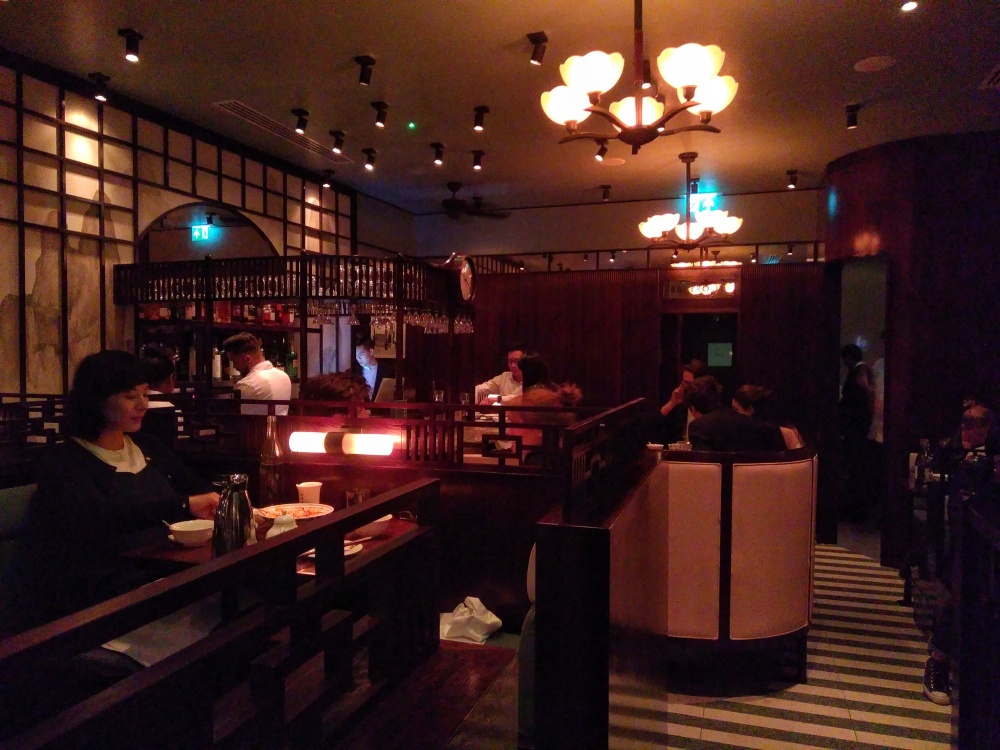
So, perhaps inevitably, I was very intrigued to hear that there was a restaurant (from the same team behind the fêted Bao) that aimed to recreate 1930s Taipei. ‘1930s Shanghai’ is the usual cliché, and there are already several other London restaurants using it as a theme (despite the sad closure of Shanghai Blues last year). However, Japanese-controlled Taipei could be an interesting prospect: would that have influenced the food? Would there be rationing? Might it be a bit like one of those ‘Blitz party’ events that Bourne & Hollingsworth organise? And, yes, I did bring LBJ along, but not for *that* reason.
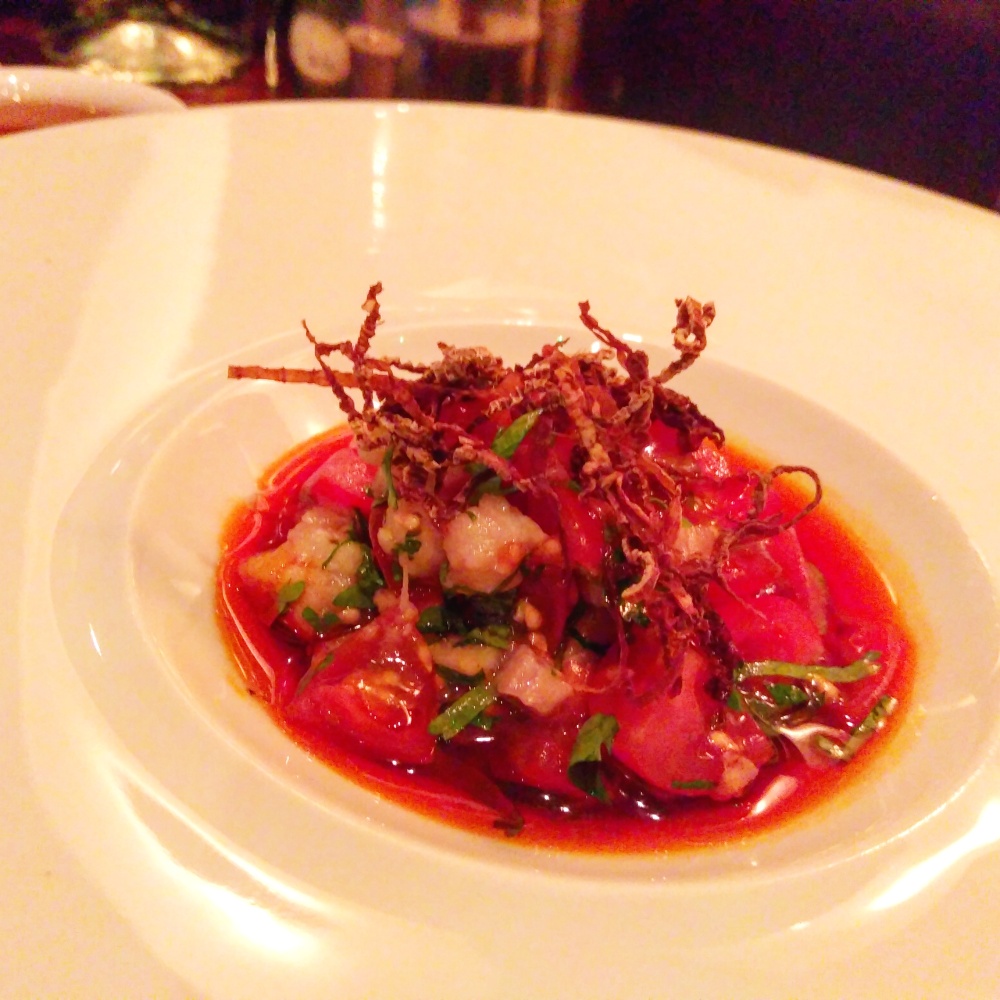
We walk in, anxious that we might be facing Bao-style waiting times, but are pleasantly surprised to be ushered to the upstairs bar area and told that there will be a table available shortly. The chirpy bartender starts telling us about her cocktails, but it is the tea menu that has caught my eye (although the wine list was impressive too). Both floors are compactly-fitted with booths and centred around bar areas, the soft lighting conveying a surprisingly intimate atmosphere for what is actually a very crowded space. The discreet, pinky glow feels more In the Mood For Love than Shanghai Surprise (or Taipei Thaumaturgy?), but despite the decor, there isn’t any attempt at Japanese fusion on the menu.

The teas are made downstairs, in the by a specially appointed tea master in the ‘pavilion’ area. The menu is impressive, boasting three different cold-brews (including one sparkling, for those so inclined), as well as six different Taiwanese teas that are available for a ‘tea ceremony’ – a pot for two that can be refilled multiple times, at a temperature designed to bring out the best of the leaves (£6-12). As well as producing arguably the finest tea in the Chinese-speaking world (its estates being subject to more stringent checks than those on the Mainland), Taiwan is one of the world’s largest whisky markets. Xu has picked up on the fact that both of these drinks have long traditions of connoisseurship and many variables, producing a ‘Kavalan Whisky tea ceremony’, aimed at pairing the two (£8.50-£9.50). Eventually, we settled for the 2003 ‘cooked’ Pu Erh, knowing that its flavour would continue to develop throughout the meal.
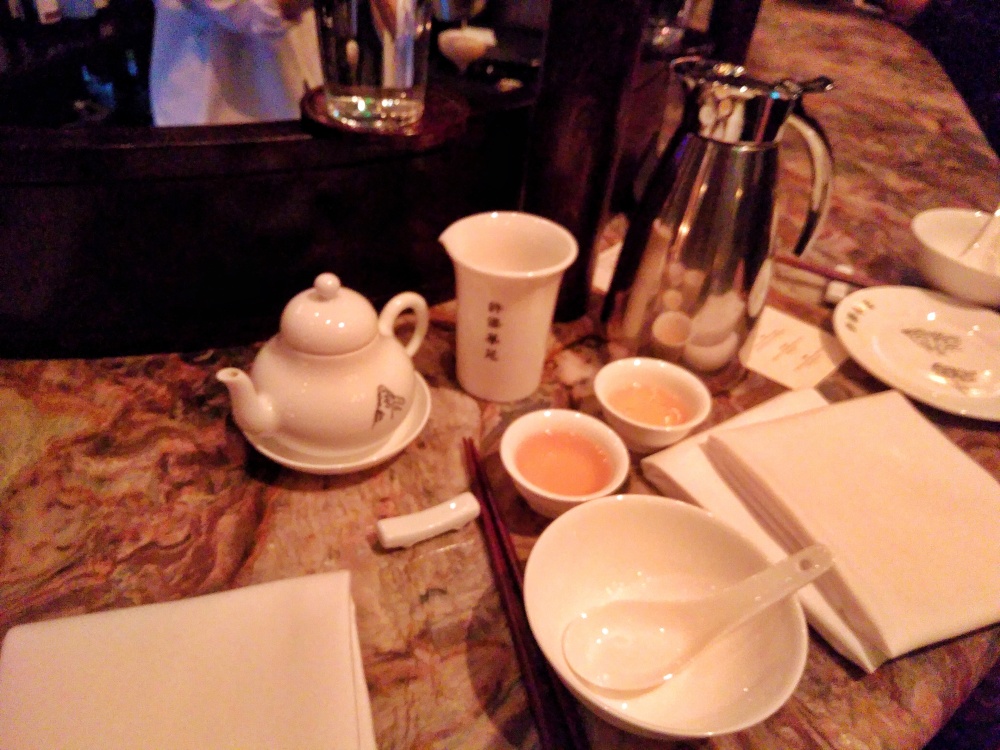
Having scoured the menu, LBJ and I are ushered to our booth. The bartender looks slightly disappointed that our convivial badinage had come to an end. A few minutes later, the starters appeared. The ‘Tomato & Smoked Eel’ with ‘dried soy daikon’ was an exquisite culinary tour de force: the slivers of pale anguilliform flesh swam in a glowering red concoction that was both tart and searingly spicy, the nest of daikon lending a deep, savoury note. This may well have been the best thing I have eaten in 2017, so far. Then came the ‘Chilled Clams’ in ‘chilli marinade’, served with basil oil. These looked not unlike globules of phlegm, lying prettily in their tiny shells, on a mound of crushed ice. The chilli was less apparent than in the eel dish, but the aromatic basil lent itself surprisingly well to the shellfish.
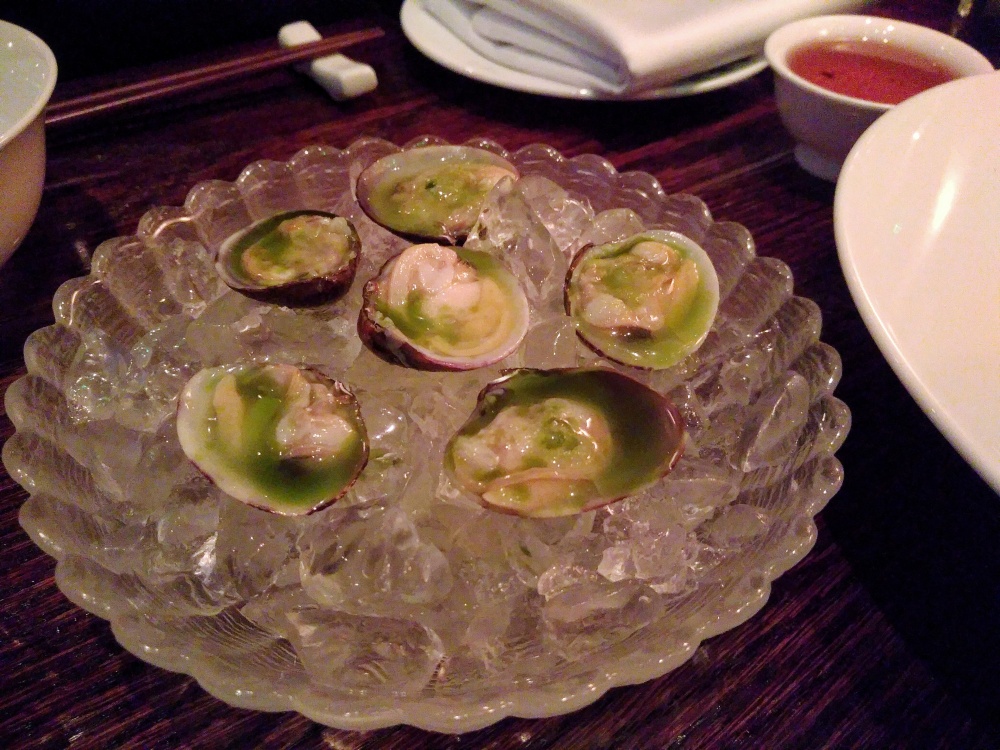
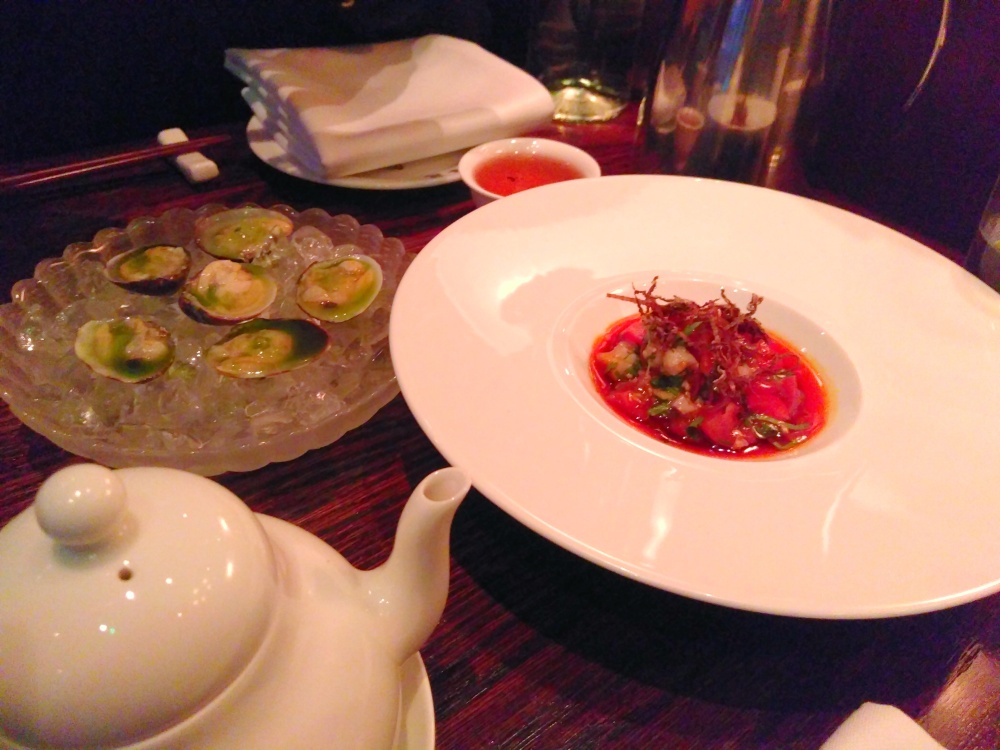
I had originally expressed some doubts about the ‘Chilli Egg Drop Crab’ – I avoid eggs when possible and generally only consume then in the form of cake. I have no regrets about swallowing my reservations in this case, however. The crab meat came dressed, in its own shell, amidst a satin-smooth chilli emulsion that had been granted a subtle pungency by the presence of fermented shrimp. The capsaicin was both understated and profound, its peppery oiliness only penetrating the palate a minute or so after the initial mouthful.
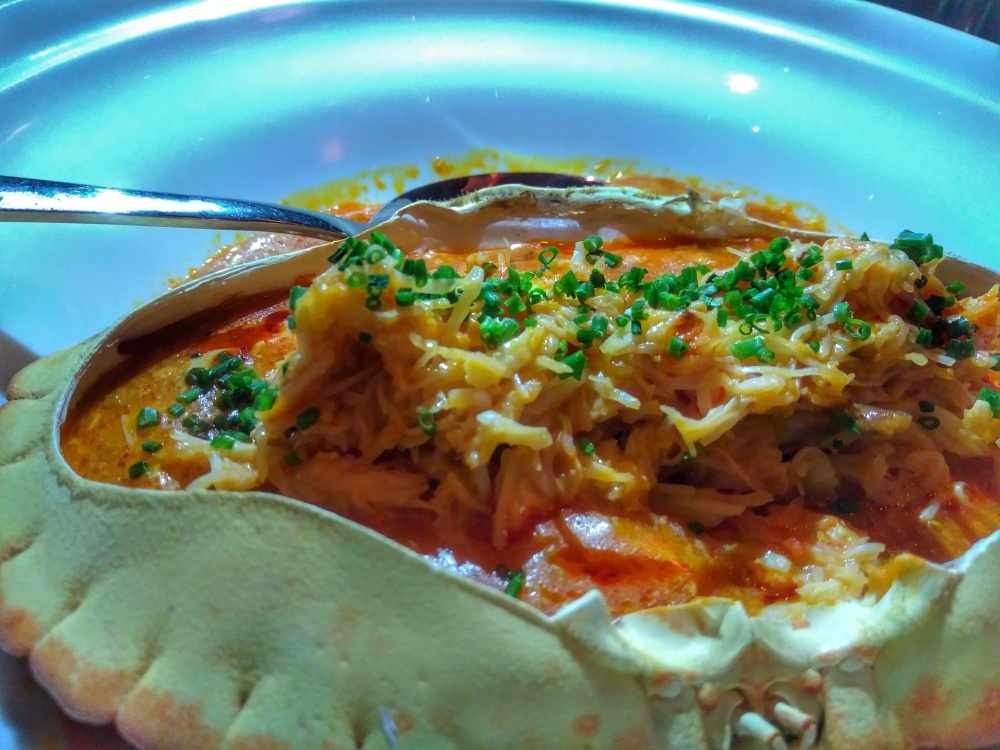
Our tongues enlivened but our gullets not yet full, LBJ and I dithered between the intriguing ‘Cuttlefish Toast’ with whipped cod roe and the vegetarian variety of the ‘Taro Dumpling’. We chose the latter, ever seduced by the promise of a good dumpling. Three triangles of thick, chewy yam flour appeared, their bottoms seared to a crisp, as the top two-thirds remained as soft and wobbly as Elton John’s bingo wings. The vegetable filling, though satisfying, seemed a little over-polite after our orgy of chilli and seafood, as did the verdant Kow Choi oil dressing. I would order them again, but earlier in the meal.
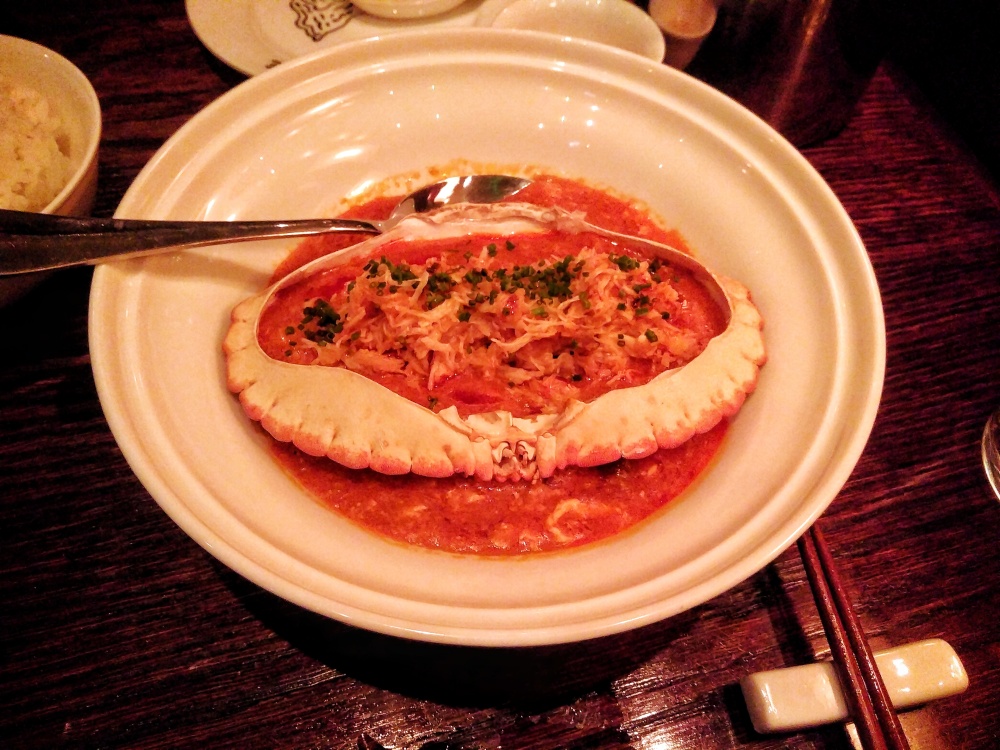
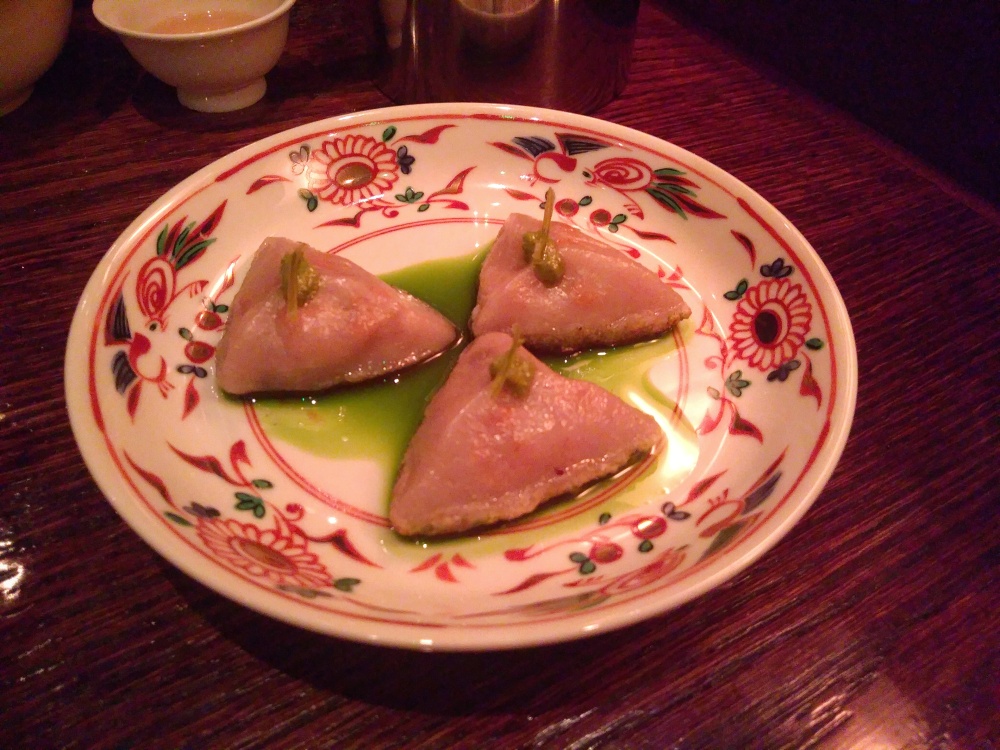
The bill came to £43.31, including service (and rice). LBJ and I had enough to eat, but we could easily have spent more, had we gone to town on the cocktails or kept ordering more starters (sorely tempting). I will definitely return to Xu after my travels and intend to eventually work my way through the entire tea menu.
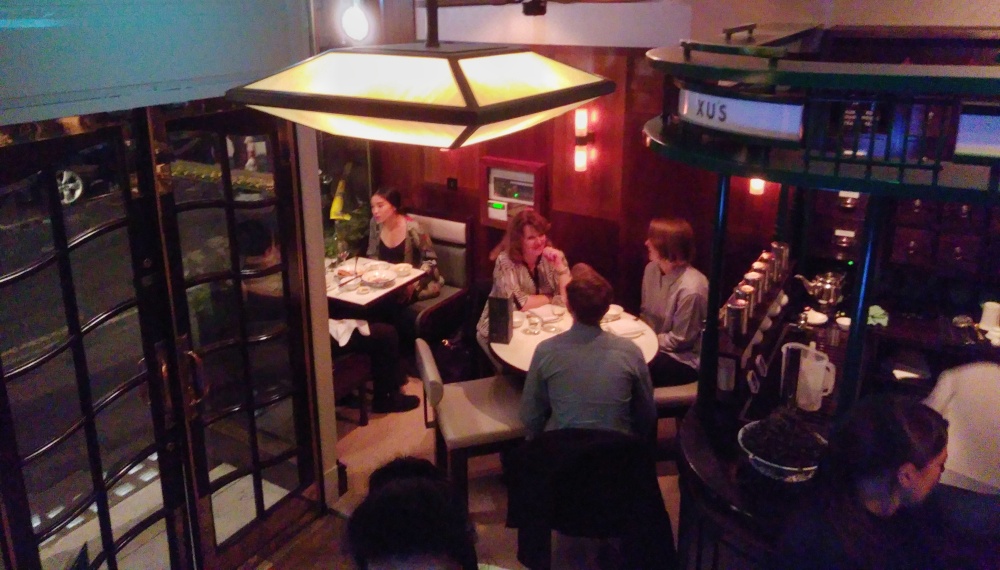
Food: 9.5/10
Service: 8/10
Ambiance: 8.5/10
Value: 8/10